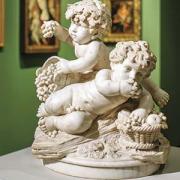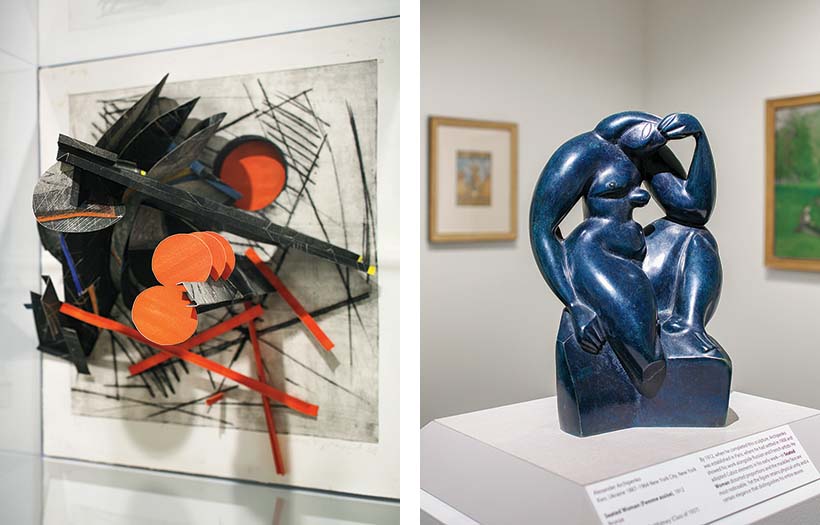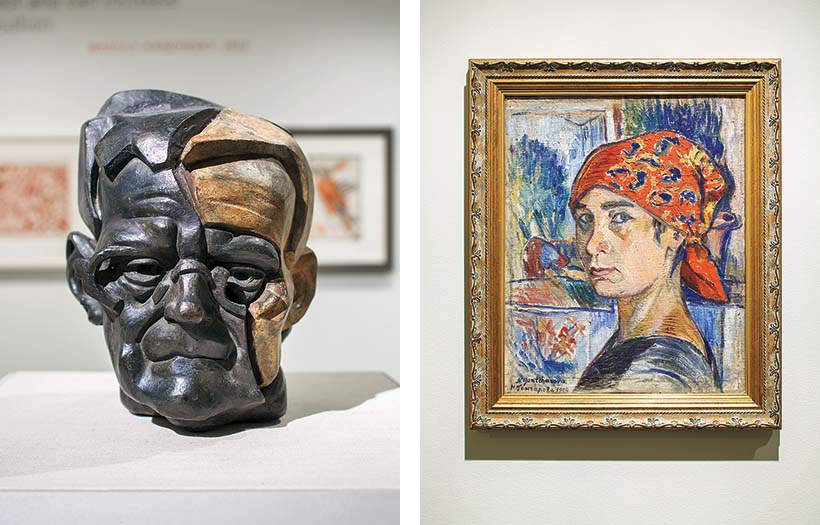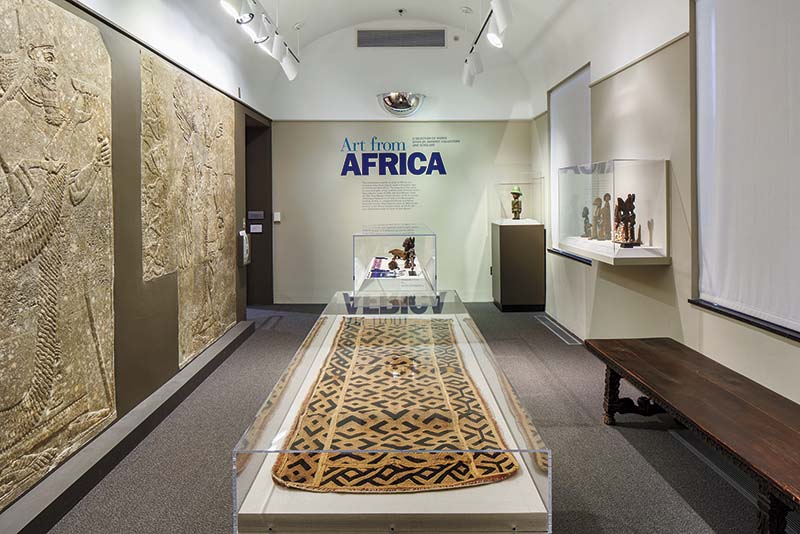After two months of interior renovations, the Mead Art Museum has unveiled six new exhibitions and installations. Their purpose: to encourage deep contemplation of art across centuries, continents and media.

The most dramatic renovations are to the Mead’s main gallery, Fairchild Gallery, which has been opened up to reveal a bright, expansive space. The historic Rotherwas Room now features contemporary art. The remaining galleries showcase curatorial reinterpretations of the Mead’s well-regarded holdings of African, American, European and Russian art. All of these exhibitions run through the fall semester.
On Tuesdays this fall, visitors created “living sculptures” by having informal, unscripted conversations with faculty and staff members on Liam Gillick’s interactive Discussion Bench Platform Red (2010). Gillick’s benches are meant to convert traditional gallery spaces into areas for discussion.

The 17th-century Rotherwas Room meets contemporary art in a new, biannual series, the Rotherwas Project. Works by Amanda Valdez now bring a fresh palette and iconography to the oak-paneled room.
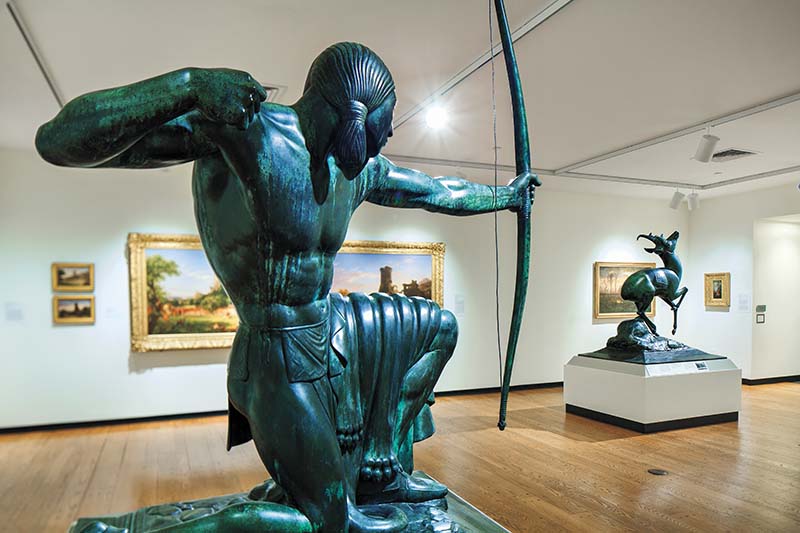
In donating hundreds of American artworks, George Dupont Pratt, class of 1893, and Herbert Lee Pratt, class of 1895, established American art as a cornerstone of the Mead’s collection.

The artworks in Fairchild Gallery underscore how museum collections are built in part by chance: objects accumulate over time, largely thanks to the collecting passions and generosity of supporters.
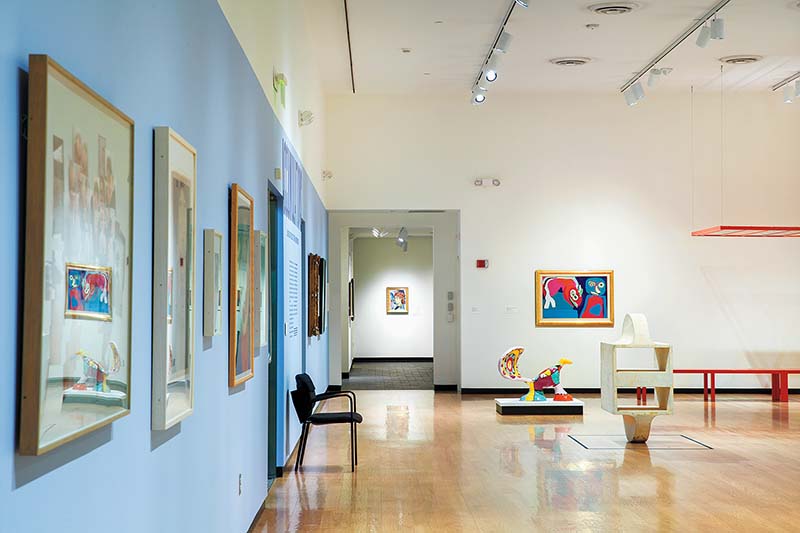
The Mead’s 19,000 objects, given by more than 500 people, span 5,000 years and numerous cultures. Above, David Nash’s Unknown series, gifts of Andrew G. Galef ’54 and Bronya Galef.
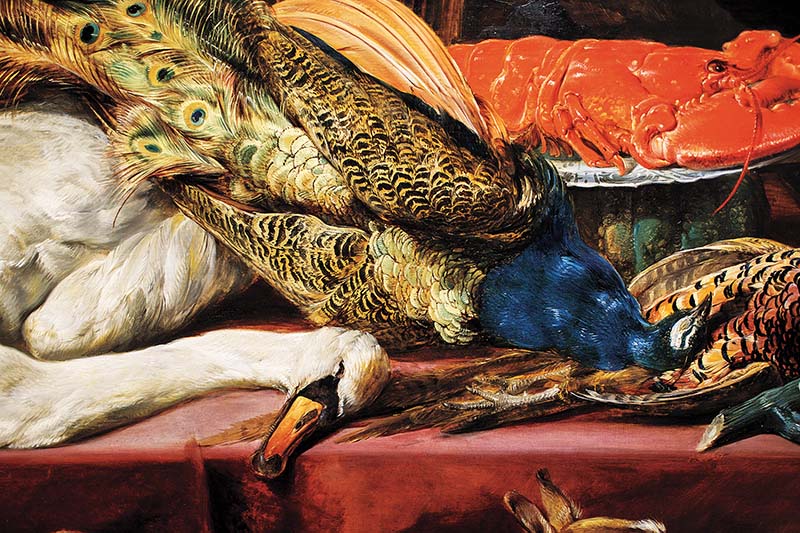
Nicola Courtright, the William McCall Vickery 1957 Professor of the History of Art, curated the installation of European art. Above, a detail from Frans Snyders’ Larder with a Servant (Hunting Still Life), ca. 1635–40.
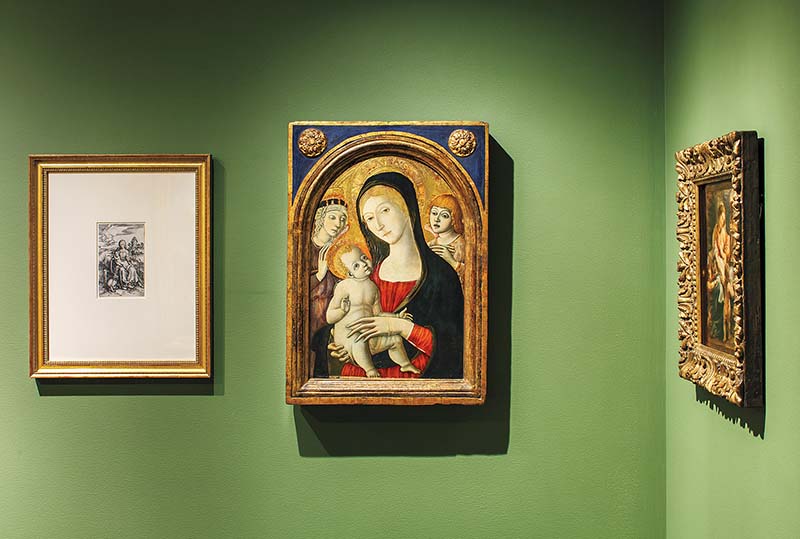
Two of Professor Courtright's courses inspired the installation effort, and some of her students researched the objects on display. Above, center, Madonna and Child with Angels, ca. 1485, by Guidoccio Cozzarelli.
